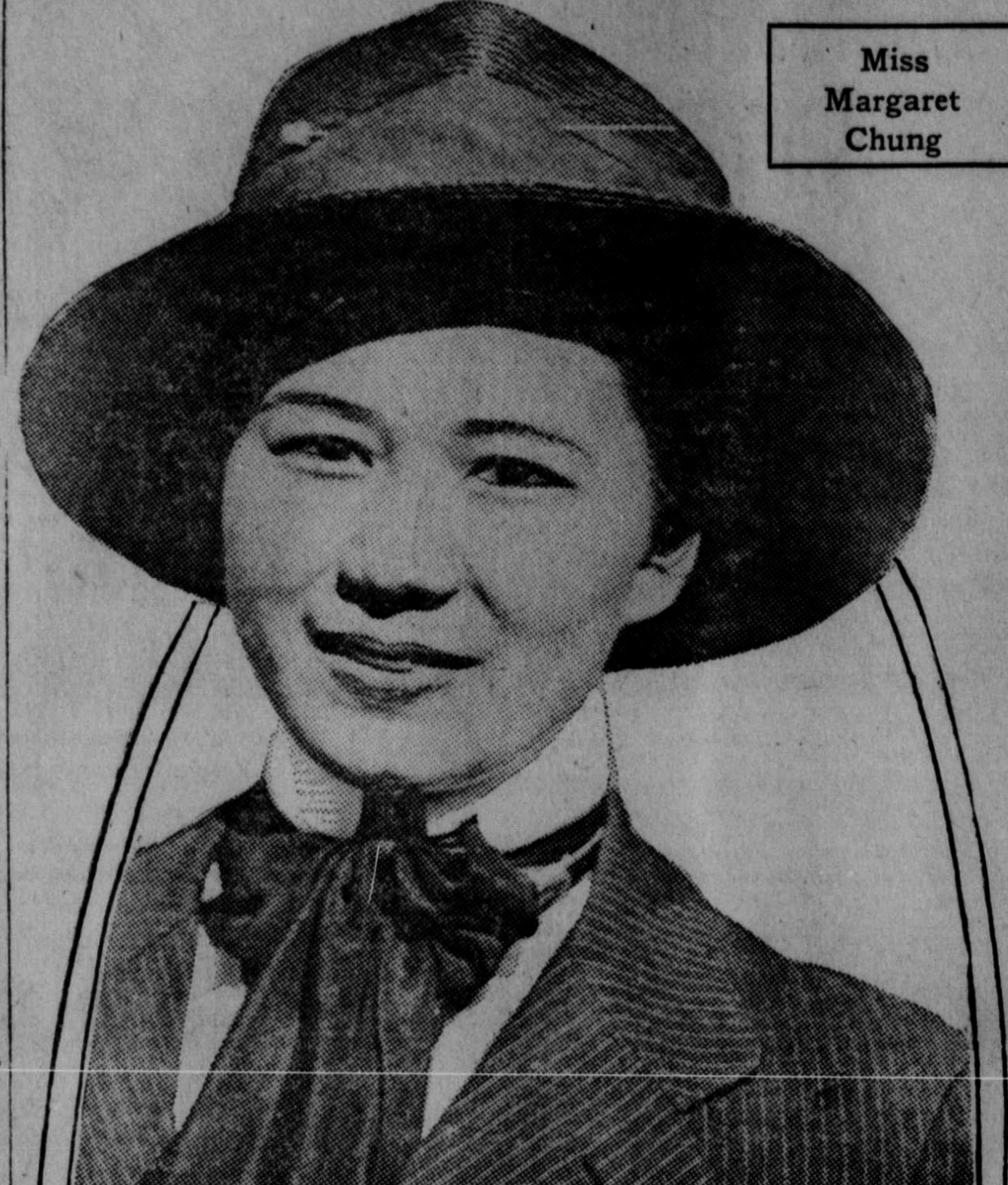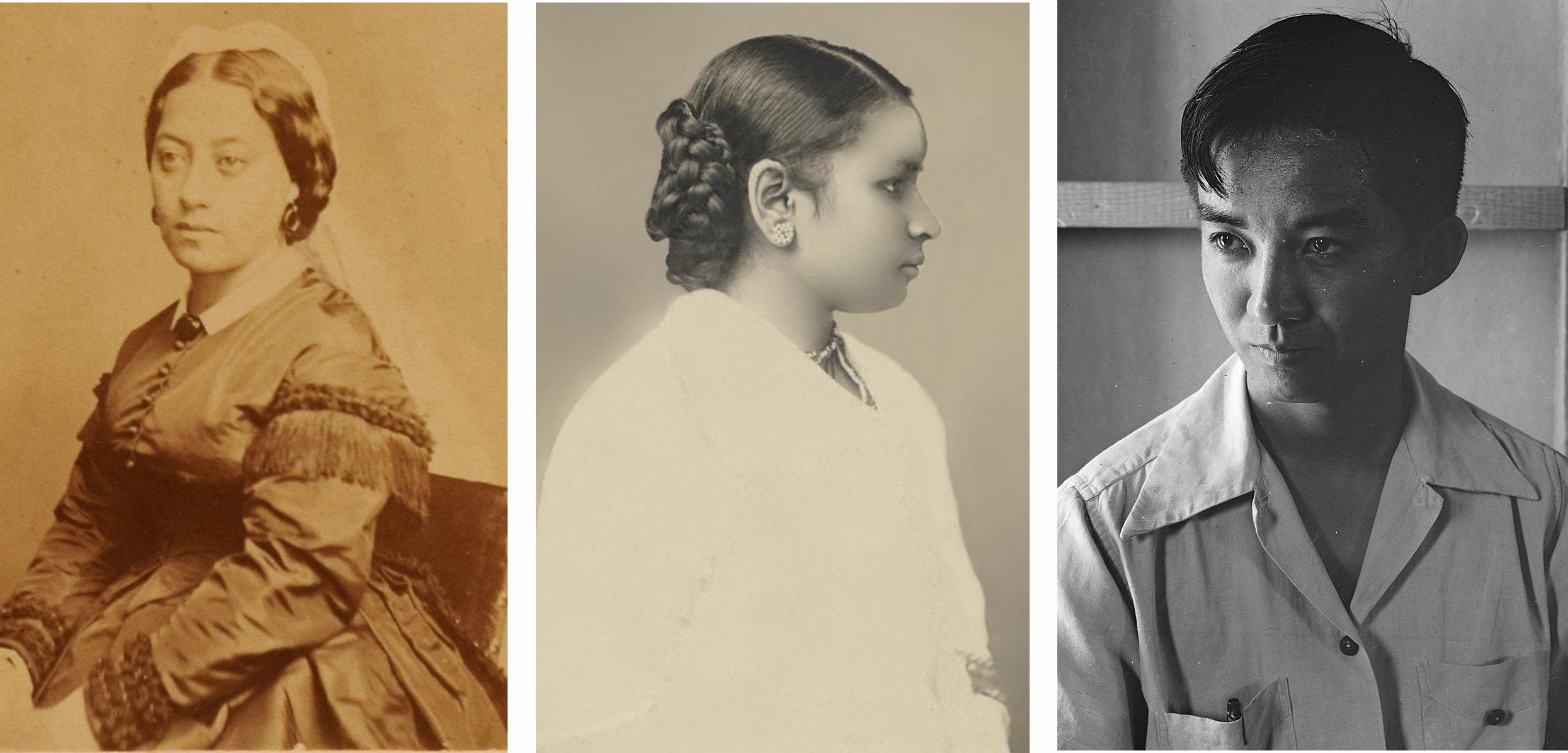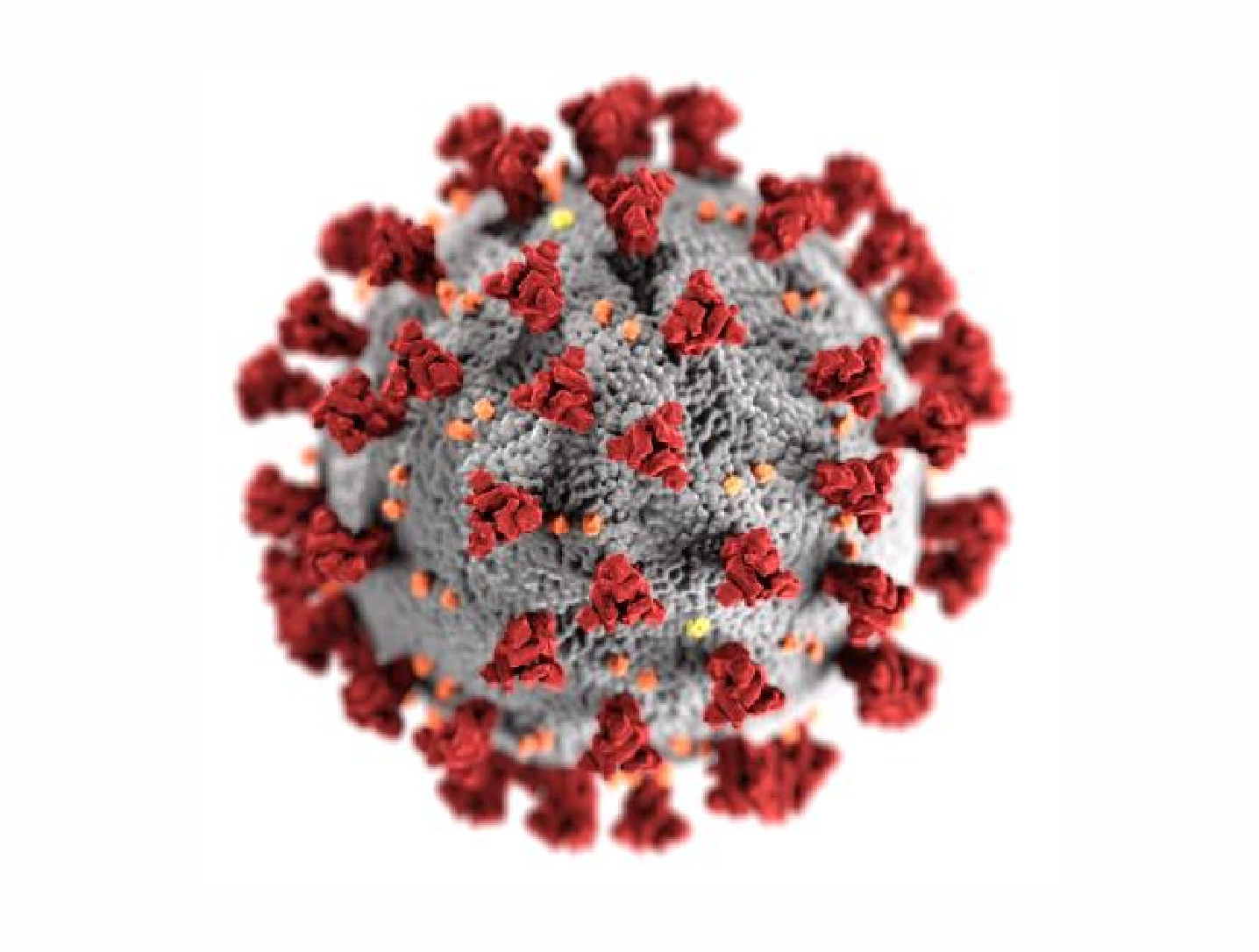A stethoscope, scrub top, and medical clipboard. In this lesson, students learn about APIDA healthcare workers, historically to the present day.
Grade: 7-10Subject:
History, Social Studies, English Language Arts
Number of Activities: 7
In this lesson, students will examine the historical events and trends that posed barriers to Asian Pacific Islander Desi American (APIDA) people entering healthcare professions. They will also learn about notable APIDA healthcare professionals who paved the way for future generations of APIDAs. Students will also study how APIDA healthcare workers were impacted by the COVID-19 pandemic in 2020. Overall, students will gain a broader understanding of how APIDA healthcare workers have contributed to the well-being of all Americans.
Students will:
- Describe the barriers that exist for APIDA people entering the healthcare profession.
- Identify notable historical events that impacted APIDAs in the healthcare profession.
- Identify notable APIDA healthcare professionals and explain their contributions to the field.
APIDA Healthcare Workers Essay:
Today, there are over 1 million Asian Pacific Islander Desi American (APIDA)
healthcare workers in the United States. These include physicians, registered nurses, surgeons, pharmacists, and more. However, historically, APIDA healthcare workers were not always prevalent in this profession. Because of racism and
xenophobia, many APIDA people were denied access into this field.
Many early Asian American immigrants faced harsh discrimination as a result of the 1882
Chinese Exclusion Act. The Act instituted a ban on all Chinese laborers entering the United States. By the 1920s, more than half of all states had some requirement that linked acquiring a medical license to an individual’s citizenship – this made it near impossible for Chinese immigrants to acquire a medical license since many were not U.S. citizens at the time.
In addition, Asian Americans were often the victims of anti-Asian sentiments. For example, they were denied access to medical schools. They faced prejudices from White patients who did not want to be served by Asian American doctors. Conversely, they also faced scrutiny from fellow Asians who were skeptical of western medicine. Female Asian Americans struggled with both racism and sexism. For example, Patsy Mink (1927-2002) originally wanted to be a doctor but was denied acceptance to every medical school to which she had applied. As a result of this, she went into law instead and became the first woman of color, and first Asian American woman, to serve in Congress. In another example, Dr. Margaret Chung (1889-1959), the first American-born Asian American doctor, wore masculine clothing and referred to herself as, “Mike,” while studying at the University of Southern California’s medical school. As a practitioner, she was rejected from jobs and eventually started her own private practice.
In 1965, the Immigration and Nationality Act was passed. This Act lifted previous exclusion bans and favored professional skills and family reunification. This resulted in an increase of Asian immigrants to the United States and encouraged foreign medical graduates to practice in the United States. About 25% of U.S. medical students are foreign-trained, with India and China being a leading source of immigrant doctors. The Philippines and India are leading sources for immigrant registered nurses.
APIDA healthcare workers have contributed greatly to the medical field, not only through their care for others, but through scientific contributions and medical innovations. Dr. Min Chue Chang (1908-1991), a Chinese American biologist, was one of the first innovators of
In-Vitro Fertilization (IVF). The research of Dr. Flossie Wong-Staal (1946-2020), a Chinese American biologist, was used to develop the COVID-19
vaccine. Peter Tsai (born 1952) is a Taiwanese American inventor and scientist. He is best known for inventing the N95 mask, a protective face covering.
Throughout much of history, APIDA healthcare workers have been on the frontlines providing courageous and compassionate care. For example, in the 1980s-1990s, there was an
AIDS epidemic. AIDS is a disease caused by a virus that attacks cells in the body’s immune system. San Francisco, California had the highest number of AIDS cases in the country. San Francisco General Hospital created ward 5B, the first hospital ward in the world dedicated to caring for patients with AIDS. Nurses at San Francisco General Hospital who were part of Service Employees International
Union (SEIU) were on the frontlines taking care of AIDS patients in ward 5B. For example, Luisa Blue,* a Filipino American nurse and SEIU member, advocated for compassionate care of AIDS patients. She worked to ensure safety and education for healthcare workers. She advocated for laws on
blood borne pathogens and safe needle handling that helped protect both patients and healthcare workers.
APIDA healthcare workers have struggled to find places of belonging and acceptance in their field. In 2020, a
global pandemic began due to the outbreak of a contagious,
respiratory illness called COVID-19. The virus initiated public health measures such as travel restrictions, lockdowns, mask mandates, business and school closures, and more. Anti-Asian hate crimes spiked during this time as xenophobic ideas likened COVID-19 to an “Asian” or “Chinese” virus. According to the Stop AAPI Hate Center, 1,900 hate crimes against Asian Americans were reported. Hospitals and healthcare workers contributed essential care during the pandemic, but also bore the brunt of many of its effects, particularly APIDA healthcare workers. Filipino nurses make up about 4% of the registered nurse population in the United States. But, they accounted for over 31% of fatalities among nurses during the COVID-19 pandemic. During the pandemic, over 1.4 million APIDA healthcare workers made up 8.5% of all
essential healthcare workers. Note that APIDAs make up only 6.8% of the total U.S. population. Thus, they were
disproportionately harmed by being more vulnerable to health risks.
APIDA essential healthcare workers face specific risks and challenges in their work. They are often on the frontlines during times of crisis, dealing with heightened health risks and potential discrimination. But despite this, they have come together to advocate for their rights.
Many APIDA healthcare workers are a part of, or have formed, unions and community organizations to organize and engage in collective bargaining for job security, labor equality, and workplace protections. Such organizations and unions include National Nurses United (NNU), the Asian Health Coalition, the Asian & Pacific Islander Caucus for Public Health, the Philippine Nurses Association, and Nurse Alliance of SEIU California.
Zenei Triunfo-Cortez,* a registered nurse, became the first Filipina president of NNU in 2018. When Filipino nurses filed a case in 2010 for discrimination, Triunfo-Cortez and the union stood by their side. Additionally, during the COVID-19 pandemic, Triunfo-Cortez and NNU advocated for nurses to receive
Personal Protective Equipment (PPE) and stronger infectious disease guidance. They sent letters and petitions to Congress for the highest levels of protection for healthcare workers.
APIDA healthcare workers and medical students continue to experience racism. A 2023 qualitative study of twenty-five Asian American medical students found that they reported experiences of invisibility and not being seen as an individual, and simultaneously being the visible target of anti-Asian racism.
Despite their large presence in the healthcare profession, APIDA healthcare workers are rarely represented in TV shows and movies showcasing nurses, doctors, and other practitioners. Additionally, though Asian Americans are overrepresented in medicine, they are largely left out of leadership roles.
Today, APIDA healthcare workers continue to care for many people in the United States, contributing to the well-being of all Americans. Yet, they are not adequately recognized for their sacrifice and contributions.
* Birth year unknown.
Bibliography:
- AIDS: Acquired immunodeficiency syndrome (AIDS) occurs at the most advanced stage of an Human immunodeficiency virus (HIV) infection; HIV is a virus that attacks the body’s immune system
- Blood borne pathogens: microorganisms that are carried in blood that can cause disease; HIV is a common blood borne pathogen
- Chinese Exclusion Act: signed on May 6th, 1882, this Act was used to limit immigration to the United States based on race and was a direct response to growing anti-Asian sentiments
- Disproportionately: too large or too small in comparison with something else
- Epidemic: an outbreak of disease that spreads quickly and affects many individuals at the same time
- Essential healthcare workers: healthcare workers who have the potential for direct or indirect exposure to patients or infectious materials
- Global pandemic: an outbreak of a disease occurring in countries all over the globe
- Healthcare worker someone with formal training and experience who provides health care treatment to others (e.g. physicians, registered nurses, surgeons, and pharmacists)
- In-Vitro Fertilization (IVF): a fertility treatment that involves combining a female’s eggs with a male’s sperm in a laboratory to create an embryo, which is then transferred to the female’s uterus
- Personal Protective Equipment (PPE): clothing, helmets, goggles, or other equipment that protects the wearer from injury or infection
- Respiratory: anything related to breathing (moving air and gasses into and out of the lungs)
- Vaccine: a preparation that is used to stimulate the body’s immune response against diseases
- Xenophobia: the fear or dislike of anything or anyone perceived to be foreign
- Union: an organization of workers formed for the purpose of advancing its members' interests in respect to wages, benefits, and working conditions
- How did the Chinese Exclusion Act affect APIDA healthcare workers?
- How did the Immigration and Nationality Act of 1965 affect APIDA healthcare workers?
- How did the COVID-19 pandemic affect the APIDA healthcare community?
- What role do unions play in helping APIDA healthcare professionals?
- What are some barriers and challenges faced by APIDA individuals in healthcare today?
In Activity 1, students examine their knowledge about healthcare workers, including examples, tasks, benefits, and challenges of being a healthcare worker.
Activity 1: Accessing Prior Knowledge about Healthcare Workers
- Tell students they will be learning about APIDA healthcare workers.
- Facilitate a class discussion by asking the following questions:
- What are examples of a healthcare worker?
- What are the essential tasks of a healthcare worker?
- What are the benefits of being a healthcare worker?
- What are the challenges of being a healthcare worker?
- Does a healthcare workers’ gender and cultural background matter in regard to how they do their job?
- How might a person’s gender and cultural background impact their job as a healthcare worker?
- Show students the graph entitled, “Figure 1. Immigrant Civilian Employed Health-Care Workers (ages 16 and older), by Region of Birth and Occupation, 2021,” from the Migration Policy Institute article entitled, “Immigrant Health-Care Workers in the United States.”
- Facilitate a class discussion by asking the following questions:
- Who is the source? How reliable is this source?
- What is this source trying to tell us?
- What does the X-axis represent? What does the Y-axis represent?
- To which other resources can we refer in order to corroborate this data?

This portrait of Dr. Margaret Chung was originally published in the October 14, 1914 edition of Los Angeles Herald with an article entitled, “Chinese Girl Here Studying Medicine.”
Credit: Public Domain via Wikimedia Commons
Activity 2: Summarizing the Status of APIDA Healthcare Workers
- Have students engage in a video “carousel” activity by assigning students to watch these three videos:
- Video 1: Health Care’s Invisible Minority
- Video 2: AAPI Health Care Workers Fight COVID-19 & Racism
- Video 3: The First American-Born Chinese Woman Doctor
- Have students take notes by completing the worksheet entitled, “Video Carousel Note Catcher.”
- Have students answer these questions for the first video:
- What are some common stereotypes associated with the Model Minority Myth?
- How does the video address the diversity within the Asian American community in terms of socioeconomic status, cultural backgrounds, and experiences?
- What does the video say about healthcare disparities within the Asian American community? How does this relate to the Model Minority stereotype?
- Have students answer these questions for the second video:
- How did APIDA healthcare workers in the video describe their experiences with racism during the COVID-19 pandemic? What were some specific challenges they faced?
- What are APIDA communities doing to address anti-Asian racism among healthcare professionals?
- Have students answer these questions for the third video:
- What obstacles did Dr. Chung face as an Asian American woman in the medical field during this time? How did she overcome these challenges and what strategies did she use?
- How did the passing of the Chinese Exclusion Act affect Dr. Chung and her community? How did she advocate for the health and well-being of Chinese immigrant communities in the United States?
- How did Dr. Chung contribute to the war effort during World War II? What was her role in supporting soldiers and advocating for women?
- Display three large poster papers around the room, one for each video. Have students summarize a key take-away on a post-it paper and place it on the corresponding poster paper.
- Review responses for each video/poster. Have students synthesize all the comments and record summarizing comments and display for all to see.
- Have students write an informative essay on what they learned about APIDA healthcare workers.
Activity 3: Examining the Impacts of Historical Events on APIDA Healthcare Workers
- Have students read the essay. Consider the following options:
- OPTION 1: Have students read the essay independently either for homework or during class time.
- OPTION 2: Read aloud the essay and model annotating.
- OPTION 3: Have students read aloud in pairs or small groups.
- Facilitate a class discussion by asking the Discussion Questions.
- Create the following chart and display for all to see:
|
Event/Law
|
Brief Summary
|
Impact on APIDA healthcare workers
|
|
Chinese Exclusion Act
|
|
|
|
1965 Immigration Act
|
|
|
|
COVID-19 Pandemic
|
|
|
- Have students work in small group and assign each group to one of the following events or laws:
- Chinese Exclusion Act
- 1965 Immigration Act
- COVID-19 Pandemic
- Have each group refer to the essay and internet research to collect data to complete each section of the chart:
- Have students record a brief summary of what each event or law is.
- Have students record 3-5 ways in which the event or law impacted APIDA healthcare workers.
- Facilitate a discussion by asking the following questions:
- How is healthcare impacted by laws, policies, and historical events?
- How are APIDA communities impacted by laws, policies, and historical events?
- How are we impacted as a society by the issues raised in the essay and this activity?

In Activity 4, students research a notable APIDA trailblazer in the healthcare industry, such as Queen Emma Kalanikaumakaʻamano Kaleleonālani Naʻea Rooke (left), Dr. Anandibai Gopalrao Joshi (center), or Dr. Harvey Akio Itano (right)
Activity 4: Researching a Notable APIDA Healthcare Worker
- Have students research a notable APIDA trailblazer in the healthcare industry. Here are some examples:
- Queen Emma Kalanikaumakaʻamano Kaleleonālani Naʻea Rooke (1836-1885)
- Dr. Anandibai Gopalrao Joshi (1865-1887)
- Dr. Min Chue Chang (1908-1991)
- Dr. Harvey Akio Itano (1920-2010)
- Richard Kekuni Akana Blaisdell (1925-2016)
- David Ho, M.D. (born 1952)
- Dr. Peter Tsai (born 1952)
- Dr. Katherine Luzuriaga (born 1957)
- Dr. Marjorie Mau
- Fe del Mundo (1911-2011)
- Kiyoshi Kuromiya (1943-2000)
- Have students complete the worksheet entitled, “APIDA Healthcare Trailblazers.”
- Have students identify a person to study and write his/her/their name in the first row.
- Have students complete “Part 1: Source Analysis.”
- Have students identify three credible sources about their chosen person and record it in the top row of this section.
- Have students answer the following questions for each source:
- What did you learn from this source?
- What is corroborated across all three sources?
- What is contradicted across all the sources and what accounts for this contradiction?
- Have students complete “Part 2: Information Gathering” by answering the following questions about their selected person:
- What are important personal details about this person?
- What struggles did this person endure?
- How did this person overcome or resist barriers?
- What are this person’s achievements? How is this person a trailblazer?
- How do we feel the impact of this person’s contributions?
- Have students create a poster summarizing their person’s barriers and achievements. Place posters around the classroom and have students engage in a Gallery Walk, in which they walk around the room and read each poster.
- Have students journal given this prompt: How was your person similar to and different from the other profiles studied by your classmates?
- Facilitate a class discussion by asking the following questions:
- What are similar experiences faced by all the profiles studied?
- What are some differences among the profiles and what might account for these differences?
- What do these profiles convey about the Asian American experience in the healthcare industry?
Activity 5: Identifying Barriers and Forms of Resistance
- Have students review the essay by asking the following questions:
- What barriers do APIDA professionals in healthcare face?
- How have APIDA professionals resisted or advocated for themselves?
- Have students conduct further research via the internet in order to complete the worksheet entitled, “APIDA Healthcare Workers: Barriers and Resistance.”
- Have students identify three barriers. For each barrier, have students record the barrier. Have students record an example in the next row. Have students record a fact or statistic that supports the finding. Have students record the source.
- Have students identify three forms of resistance. For each form of resistance, have students record the resistance. Have students record an example in the next row. Have students record a fact or statistic that supports the finding. Have students record the source.
- Have students share their findings and record their responses on the board for all to see.
- Facilitate a discussion by asking students the following question: What more did you learn about the barriers and ways in which APIDA healthcare professionals overcome these barriers?
- Have students write an informative essay that answers the following questions: What is the experience of APIDA healthcare workers? What challenges exist(ed) and why? How did APIDA communities respond to these challenges?

This illustration, created at the Centers for Disease Control and Prevention (CDC), represents the coronavirus, SARS-CoV-2. Students learn about how the COVID-19 pandemic pandemic affected APIDA communities, as well as other marginalized groups.
Credit: CDC/ Alissa Eckert, MSMI; Dan Higgins, MAMS, 2020. Public Domain.
Activity 6: Analyzing the Impacts of COVID-19
- Have students engage in an inquiry project where they answer the question: Does COVID-19 discriminate?
- Tell students the following: “You have learned about how the COVID-19 pandemic affected APIDA communities. Now, we will learn about how the pandemic affected other marginalized groups such as Black Americans and Native Americans.”
- Have students complete the worksheet entitled, “Impacts of COVID-19 on Communities”:
- Have students read each article listed in the first column.
- Have students answer the following questions for each article:
- Who is this article about? Describe the community.
- How did COVID-19 affect this community?
- What are people doing about it?
- Have students identify another community and find another article about how COVID-19 impacted that community and record it in the last row. Have students answer the above questions for that article.
- Have students share their fourth article/community with a partner or in small groups.
- Facilitate a class discussion by asking the following questions:
- What were some connections you found in how COVID-19 impacts different communities?
- What were some differences you found? What accounts for those differences?
- What are the scientific effects of COVID-19? What are the societal impacts of COVID-19? Can we separate the two? Why or why not?
- Does COVID-19, the virus, discriminate? Why or why not?
- In what ways was everyone treated “equally” by COVID-19?
- How were people treated unequally by COVID-19? Who was impacted, how, and why?
- What can be done to ensure that everyone is safe from the harmful impacts of COVID-19?
Activity 7: Examining Disaggregated Data
- Display this statement for all to see: “Asian Americans and Native Hawaiian Pacific Islanders make up a significant demographic of U.S. healthcare workers. According to 2022 Census Data from the American Community Survey, 22.2% of physicians in the United States are Asian American, and 0.0787% are NHPI (Native Hawaiian, Pacific Islander). Additionally, 9.41% of registered nurses are Asian American, and 0.1% are NHPI. Lastly, 21.6% of pharmacists are Asian American, and 0.09% are NHPI.”
- Facilitate a class discussion by asking the following questions:
- What is the relevance of knowing the percentages of physicians versus registered nurses?
- What is the relevance of specifically knowing the demographics of NHPI populations?
- Have students work in small groups and find a source listing the demographics of statistics regarding the composition of APIDA healthcare professionals. Have students complete the worksheet entitled, “APIDA Healthcare Workers: Disaggregated Data.”
- Have students identify a source and record the information about the source in the first row.
- Have students provide the link in the second row.
- Have students answer the following questions and record it in subsequent rows:
- What information is conveyed in this source?
- Who is included in this data set?
- Who is not included in this data set?
- What conclusions can be drawn?
- Facilitate a class discussion by asking the following questions:
- Why is it important to have data about “Asian Americans”?
- How might data that clumps all Asian Americans together be helpful?
- How might data that clumps all Asian Americans together be problematic? Which communities are left out?
- Why is it important to know more about specific ethnic groups?
- Tell students the following: “It is very important to have and analyze disaggregated data about the APIDA community, especially when it comes to health and healthcare workers. We should think of the term ‘APIDA’ as an umbrella. Each group within the APIDA umbrella faces their own struggles, has its own history, and also deals with its own health concerns. We can only understand this by looking at disaggregated data and that is why it is so important to have.”
- Have students listen to at least two interviews of South Asian healthcare workers from the South Asian American Digital Archive (SAADA)’s Heart of a Hero. Have students compare and contrast the two interviews, looking for common themes and differences in people’s experiences. Have students discuss the idea of a “culture of sacrifice.”
- Have students analyze the art (comic panels) of artist Lisa Wool-Rim Sjöblom (born 1977), who created the “I am not a virus” illustration during the COVID-19 pandemic. Have students select an image and complete an Image Analysis. Facilitate a class discussion by asking the following question: “Why was this campaign necessary?” Have students create their own posters for the “I am not a virus” campaign.
- Have students analyze their sources used for this lesson’s activities by using the CRAAP Test. Facilitate a class discussion by asking the following question: “Why is it especially necessary to analyze sources when learning about people of color?”






